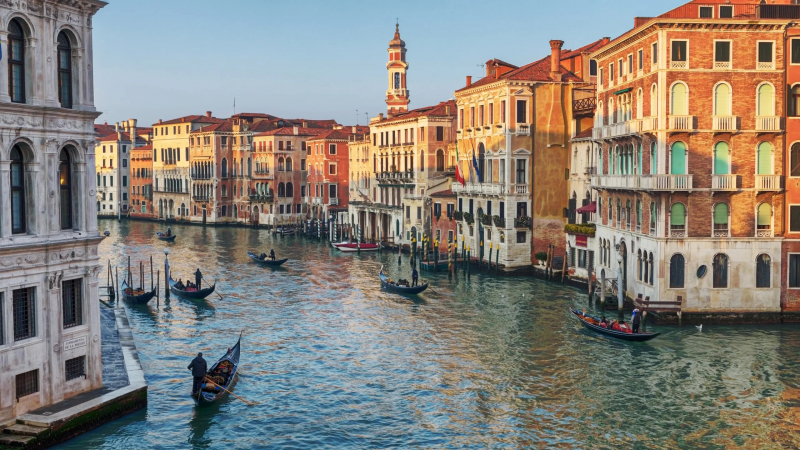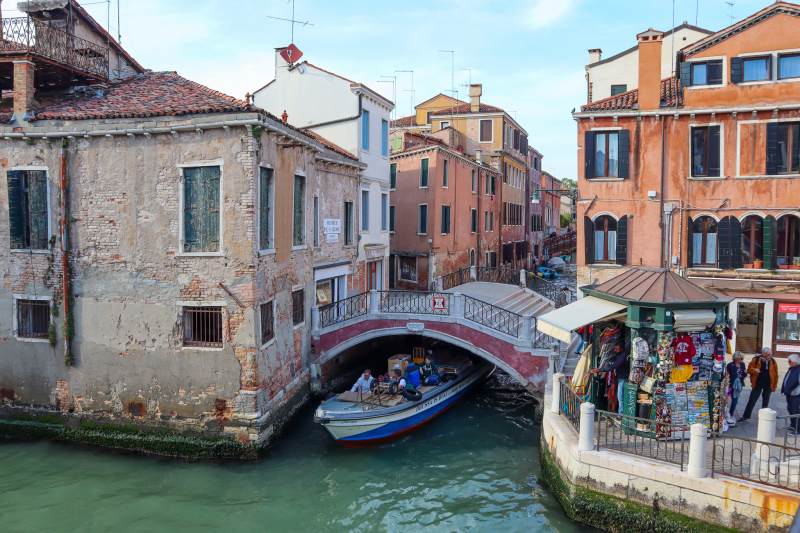Venice
Spread over 118 small islands joined by over 400 bridges, romantic Venice lays virtually unchanged since the Middle Ages. As you walk through the tightly-packed cobblestone alleyways and weathered waterfront homes, you are still able to experience Venice exactly how it was in the 1400-1500s.
The city-state of Venice was also quite formidable in terms of shipbuilding and naval force during the Middle Ages. Venice rose to become one of Europe's most important commerce cities, connecting Europe, the Middle East, and Asia after clearing the Adriatic sea of pirates. By 1204, Venice had grown so powerful that it successfully destroyed Constantinople, the Eastern Roman Byzantine capital, in what became known as the Fourth Crusade. This triumph served as a springboard for Venice, bringing in wealth, artifacts, and relics. The Horses of Saint Mark statues looted from Constantinople's Hippodrome, still stand above Saint Mark's Square (actually replicas, but the originals are on display inside).
Even the two most popular tourist attractions in Venice have deep Medieval roots. The first is the gondola rides, which have been in operation since 1094. While there are only about 400 gondolas left today, they were the most popular mode of transportation in Venice during the Middle Ages, and the canals were jammed with 10,000 of them. Even the magnificent mascaraed balls date back centuries to 1162 when Venice hosted the first Carnival. In 1797, Emperor Francis II abolished the festival, but thanks to preservationists, the Medieval feast was resurrected here in 1979.
Country: Italy



















